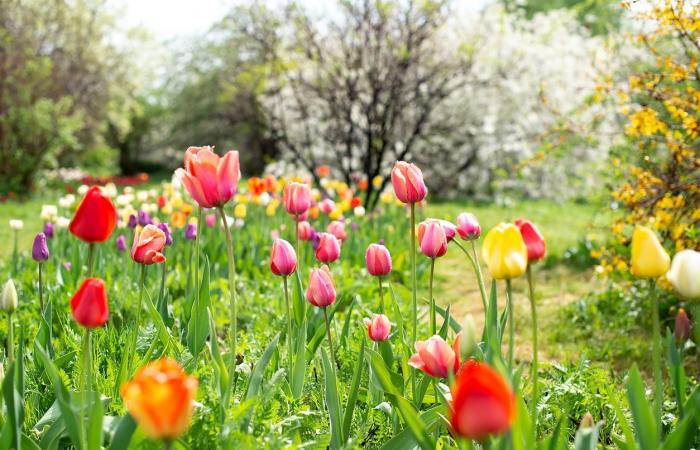Why is the end of November the key date for planting your bulbs?
Spring-flowering bulbs, such as tulips, grape hyacinths or hyacinths, need a period of cold weather to trigger their growth cycle. This process, called vernalisationis essential for them to produce beautiful flowers in spring.
By planting your bulbs before the end of November, you give them the time they need to take root in soil that is still sufficiently malleable and avoid the effects of too deep frosts.
If you wait until December, you are taking a risk. In many areas, the ground begins to freeze, making planting difficult and reducing the ability of bulbs to develop roots. Without sufficient rooting, the bulbs will have difficulty absorbing the nutrients needed for growth.
How to properly plant your bulbs for a dazzling result?
Planting bulbs is not complicated, but there are a few simple rules to follow to maximize your chances of success.
1. Choose a suitable location
Spring bulbs prefer well-drained areas, where water does not stagnate. Too much humidity can cause the bulbs to rot before they even germinate. If your soil is clay, add sand or plant them in raised beds to improve drainage.
2. Respect the correct depth
A golden rule: plant your bulbs at a depth equivalent to three times their height. For example, a 5 cm bulb should be buried approximately 15 cm. This depth protects them from frost while providing them with good anchoring.
3. Position the bulbs correctly
Place the tip of the bulb up and the rounded base (where the roots extend from) down. An error in orientation could compromise the shoot.
4. Water lightly after planting
Moderate watering will naturally compact the soil around the bulbs and encourage their rooting. Be careful not to overwater, especially if the rain is already there.
Which bulbs should you choose for spectacular blooms?
The diversity of bulbs allows you to create a colorful and varied garden in spring. Here are some suggestions according to your wishes:
- For vibrant flowerbeds : tulips, hyacinths, daffodils. These imposing flowers bring bright and structured colors.
- For elegant borders : crocuses, muscaris. Ideal for subtle pops of color at the start of the season.
- For a natural effect : snowdrops, squills. Perfect for meadows or English gardens, these bulbs adapt well to wild environments.
Vary the species to stagger the flowering between March and May, and enjoy a continuous spectacle.
What if you missed the date? What to do after the end of November?
All is not lost if you miss the deadline. Here are some alternative solutions so as not to give up on a flowery spring:
- Plant a pot : If the ground outside is frozen, opt for pots or planters that you can keep in a sheltered place (like a cold greenhouse). This gives the bulbs a chance to root before being exposed to cold.
- Buy pre-forced bulbs : These bulbs, already prepared for flowering, can be planted later and will give flowers quickly, even if you were not able to plant them in time.
- Plan for next year : If the window has definitely passed, take note of the varieties that you like and plan ahead next September.
Tips for busy or beginner gardeners
If time is short and you're just starting out, follow these time-saving tips:
- Use a bulb planter : This handy tool digs holes quickly and to the right depth.
- Plant in groups : Bulbs are often more spectacular when grouped in pockets of 5 to 10, rather than lined up individually.
- Leave markers : Once your bulbs are planted, note their location with labels. This will prevent you from accidentally disturbing them during future work.
Acting now means reaping beauty in spring
This last weekend of November is a crucial time for any gardener. By planting your bulbs now, you give them the best chance of flowering and brightening up your garden in spring. But beyond beauty, this gesture also connects you to nature and allows you to anticipate the first rays of sunshine after winter.
What if this season was an opportunity to rethink your beds or try new varieties? Autumn is not only an end, but also the beginning of a new cycle for your garden. So, grab your tools and treat yourself to a colorful spring today!







